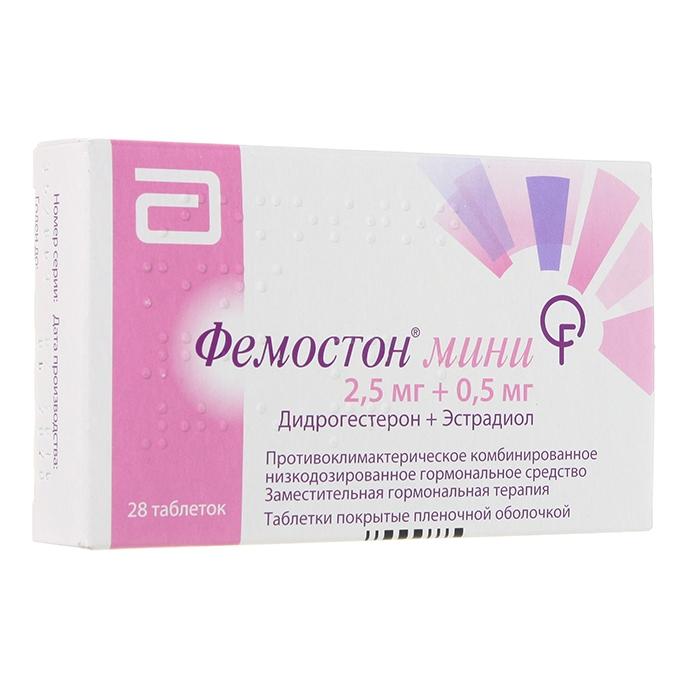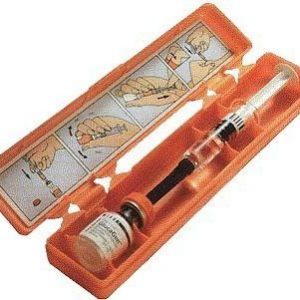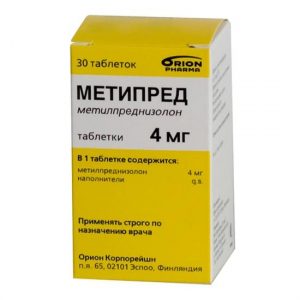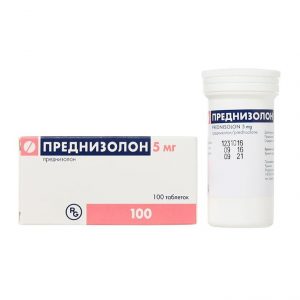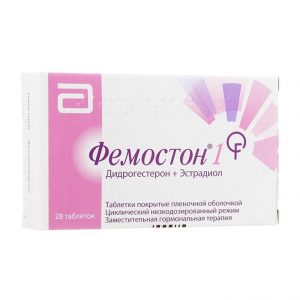Description
Release form
Film-coated tablets.
Pharmacological action
Pharmacodynamics. Estradiol
Absorption
Absorption of estradiol depends on the particle size, micronized estradiol is easily absorbed from the gastrointestinal tract.
Distribution of
Estradiol (like other estrogens) can be detected both in a bound and in a free state. About 98-99% of the dose of estradiol binds to plasma proteins, of which 30-52% – with albumin and about 46-69% – with globulin, sex hormone binding (SHBG).
Metabolism
After oral administration, estradiol is actively metabolized in the liver. The main unconjugated and conjugated metabolites are estrone and estrone sulfate, which have estrogenic activity. Estrone sulfate may undergo enterohepatic recirculation.
Excretion of
Estron and estradiol are excreted in the conjugated state with glucuronic acid by the kidneys. The half-life (T1 / 2) is 10-16 hours. Estrogens pass into breast milk.
Dependence of estradiol concentration on time and dose
With daily use of the drug Femoston ® mini, the concentration of estradiol in blood plasma reaches a constant value after about 5 days. Usually this indicator is achieved within 8-11 days after the start of therapy.
Dydrogesterone
Absorption
After oral administration, dydrogesterone is rapidly absorbed. The value of the time of onset of the maximum concentration (Tmax) for dydrogesterone varies from 30 minutes to 2.5 hours. The bioavailability of dydrogesterone is 28%.
Distribution of
More than 90% of dihydrogesterone and 20a-dihydrohydrogesterone (DHD) bind to plasma proteins.
Metabolism
After oral administration, dydrogesterone is rapidly metabolized to DGD. The maximum concentration of DHD in blood plasma is reached approximately 1.5 hours after taking the drug. The concentration of DHD in blood plasma significantly exceeds the initial concentration of dydrogesterone, the ratio of the area under the curve concentration-time (AUC) and the maximum concentration (Cmax) of DGD to dydrogesterone are about 40 and 25, respectively. The half-life for dydrogesterone is 5-7 hours, for DGD 14-17 hours.
A common characteristic feature of all metabolites of dydrogesterone is the preservation of the 4,6-dien-3-one configuration of the starting material and the absence of 17β-hydroxylation, which leads to the absence of estrogenic and androgenic activities.
Excretion
Dydrogesterone is completely excreted after 72 hours. On average, 63% of the dose taken is excreted by the kidneys. The total plasma clearance is 6.4 l / min. DGD is determined in the urine mainly in the form of a conjugate of glucuronic acid.
Dependence of the concentration of dydrogesterone on time and dose
A comparison of the kinetics of single and multiple doses (from 2.5 to 10 mg) shows that the pharmacokinetic properties of dydrogesterone and DGD do not change when taking multiple doses.
An equilibrium concentration of dydrogesterone was reached 3 days after the start of administration.
Indications
Hormone replacement therapy for estrogen deficiency in postmenopausal women (not earlier than 12 months after the last menstruation).
Contraindications
– Hypersensitivity to the components of the drug.
– Diagnosed or suspected breast cancer.
– Diagnosed or suspected estrogen-dependent malignancies (e.g., endometrial cancer).
– Diagnosed or suspected progestogen-dependent neoplasms (e.g., meningioma).
– Vaginal bleeding of unknown etiology.
– Untreated endometrial hyperplasia.
– Thrombosis (arterial and venous) and thromboembolism currently or in history (including thrombosis, deep vein thrombosis, pulmonary embolism, myocardial infarction, ischemic or hemorrhagic cerebrovascular disorders).
– Acute or chronic liver disease currently or in history (before normalization of liver function tests), including malignant liver tumors.
– Porfiry.
– Multiple or severe arterial or venous thrombosis factors associated with a congenital or acquired predisposition, for example, protein C deficiency, protein S deficiency, antithrombin III deficiency, the presence of antibodies to phospholipids (antibodies to cardiolipin, lupus anticoagulant), angina pectoris, prolonged severe obesity (body mass index more than 30 kg / m2), diseases of the vessels of the brain or coronary arteries, transient ischemic attacks, complicated lesions to apannogo heart device, atrial fibrillation.
– Pregnancy and the period of breastfeeding.
– Galactose intolerance, lactase deficiency, glucose-galactose malabsorption syndrome.
– Meningioma.
The drug Femoston ® mini should be discontinued if there are contraindications and / or if the following conditions occur:
– jaundice and / or impaired liver function
– uncontrolled arterial hypertension
– which first appeared during the use of drugs for HRT migraine-like headache.
Use during pregnancy and lactation
The drug is contraindicated in pregnancy and during breastfeeding.
The results of most epidemiological studies analyzing data on the inadvertent use of estrogen and progestogen combinations by pregnant women indicate the absence of teratogenic and fetotoxic effects of drugs on the fetus. Available data on estradiol / dydrogesterone in pregnant women are limited.
If pregnancy occurs during treatment with Femoston ®, mini therapy should be stopped immediately.
Special instructions
The drug is prescribed only if there are symptoms that adversely affect the quality of life. Therapy should be continued until the benefit of taking the drug exceeds the risk of side effects.
Experience with the drug in women over 65 is limited.
Composition of
active ingredients: 1 tablet contains micronized dydrogesterone 2.5 mg micronized estradiol hemihydrate, which is equivalent to estradiol 0.5 mg
excipients: lactose, hypromellose monohydrate (HPMC 2910) corn starch silica dioxide colloidal anhydrous magnesium stearate film coat Yellow 1 (macrogol 3350, polyvinyl alcohol, talc, titanium dioxide (E171), yellow iron oxide (E172)).
Dosage and administration of
The drug is taken orally daily, in continuous mode, 1 tablet per day (preferably at the same time of day), regardless of food intake.
Patients making a transition from another continuous sequential or cyclic regimen of the drug, must complete the current cycle, and then switch to the drug Femoston® mini. Patients who do not receive HRT preparations or who are transitioning from a continuous regimen of combined HRT preparations can start taking Femoston® mini any day.
If the patient has missed taking the pill, it must be taken within 12 hours after the usual time of administration, otherwise the missed pill should not be taken, and the pill should be taken the next day at the usual time. Skipping a drug may increase the likelihood of breakthrough uterine bleeding or spotting spotting.
To start and continue the treatment of postmenopausal disorders, the lowest effective dose should be taken for the shortest period of time (see Special instructions).
Continuous combination therapy can be started with Femoston® mini or a Femoston® product with 5 mg dydrogesterone and 1 mg estradiol per tablet, depending on the time after menopause and the severity of symptoms.
Taking the combination drug for HRT Femoston® mini in women with natural menopause can begin no earlier than 12 months after the last menstruation.
Women whose menopause is due to surgery may start taking the drug right away (as directed by a doctor if symptoms occur).
Side effects of
In clinical trials, patients who received estradiol / dydrogesterone combination therapy most often encountered: headache, abdominal pain, tension / soreness of the mammary glands and back pain.
Drug Interactions
No drug interaction studies have been conducted.
The effectiveness of estrogens and progestogens may be impaired
The metabolism of estrogens and progestogens can be enhanced by the simultaneous use of substances with a known ability to induce enzymes involved in drug metabolism, especially enzymes 2B6, ZA4, ZA5, ZA7 of the cytochrome P450 system. Such substances include anticonvulsants (e.g. phenobarbital, carbamazepine, phenytoin) and antimicrobials (e.g. rifampicin, rifabutin, nevirapine, efavirenz).
Despite the fact that ritonavir and nelfinavir are known as potent inhibitors of CYP450, ZA4, A5, A7, while used with steroid hormones, they, on the contrary, activate these enzymes.
Herbal preparations, the component of which is St. John’s wort (Hypericum perforatum), can enhance the metabolism of estrogens and progestogens due to their effects on CYP450, ZA4.
It has been clinically proven that an increased metabolism of estrogens and progestogens can lead to a weakening of their effect and a change in the profile of uterine bleeding.
Estrogens may inhibit the metabolism of other drugs
Estrogens may inhibit the CYP450 enzymes involved in drug metabolism by competitive inhibition. This should be especially taken into account for drugs with a narrow therapeutic index, such as: tacrolimus and cyclosporin A (CYP450 3A4, 3A3)
fentanyl (CYP450 3A4)
theophylline (CYP450 1A2).
Clinically, this can lead to an increase in plasma levels of such substances in toxic concentrations. Thus, careful monitoring of the drug over a long period may be required, as well as a reduction in the dose of tacrolimus, fentanyl, cyclosporin A and theophylline.
Overdose
Both estradiol and dydrogesterone are low toxicity substances. Overdose can cause symptoms such as nausea, vomiting, breast tenderness, dizziness, abdominal pain, drowsiness / fatigue, and withdrawal bleeding. An overdose is unlikely to require any specific symptomatic treatment. This also applies to cases of overdose in children.
Storage conditions
Do not store above 25 ° C.
Keep out of the reach and sight of children.
Term hodnosty
4 years
Terms leave through pharmacies
In retseptu
lekarstvennaja form
tablets
